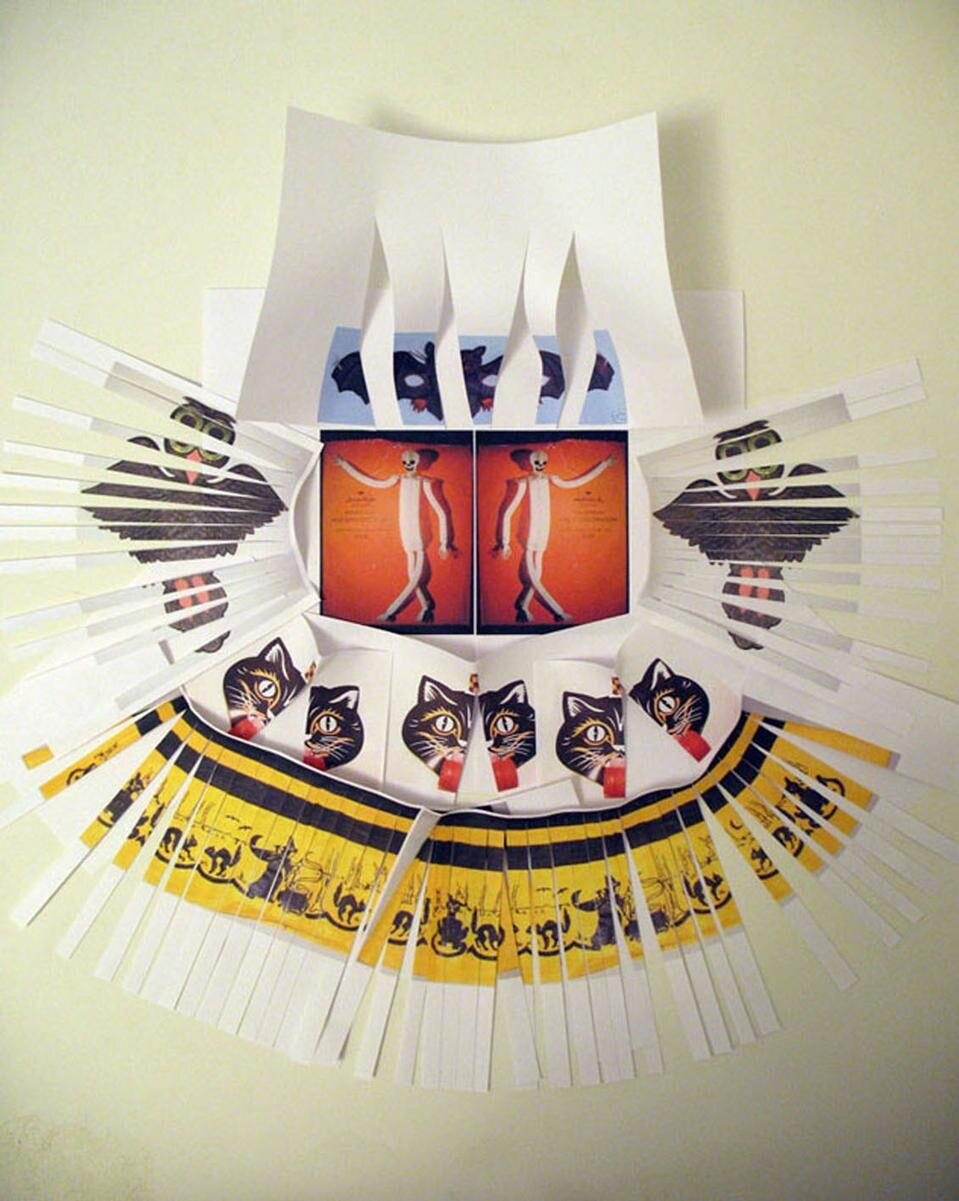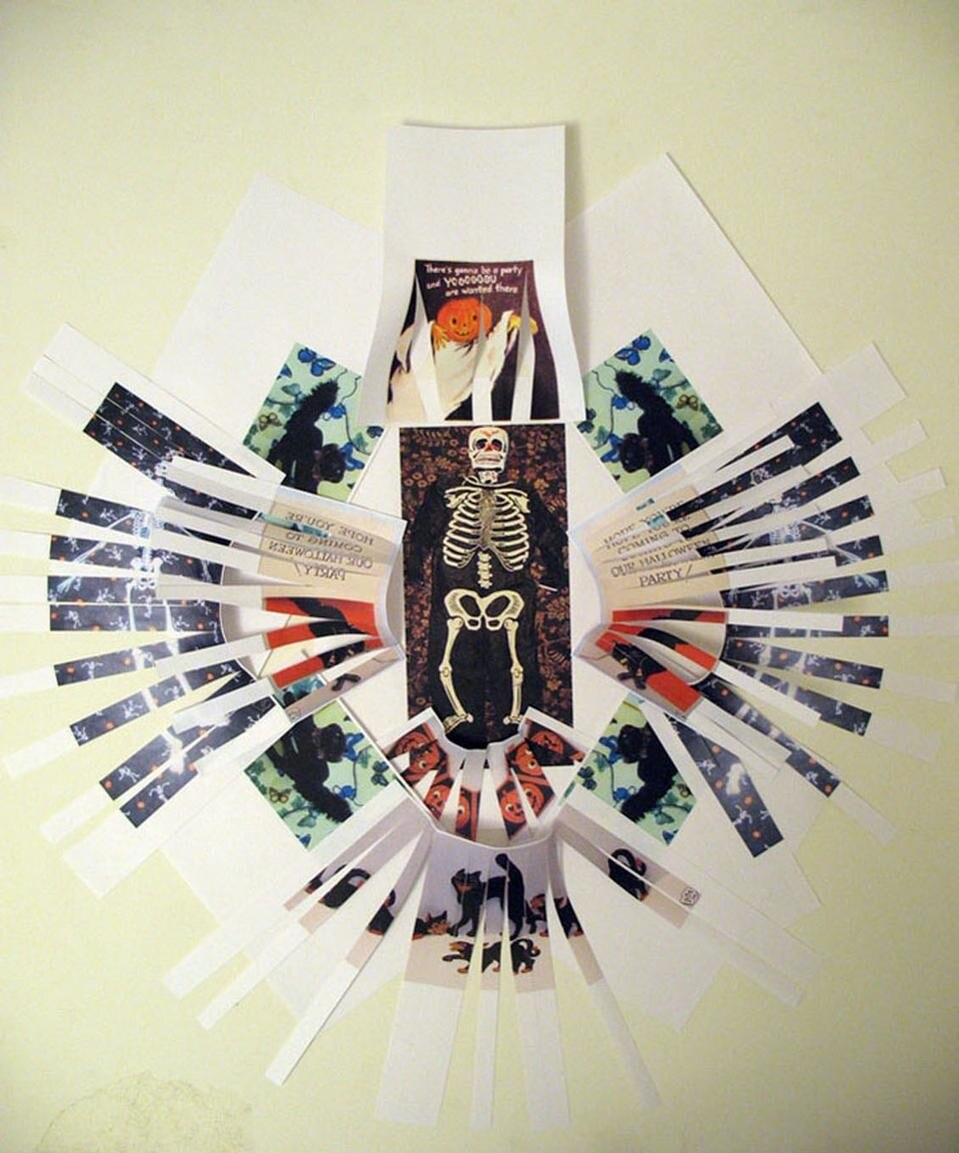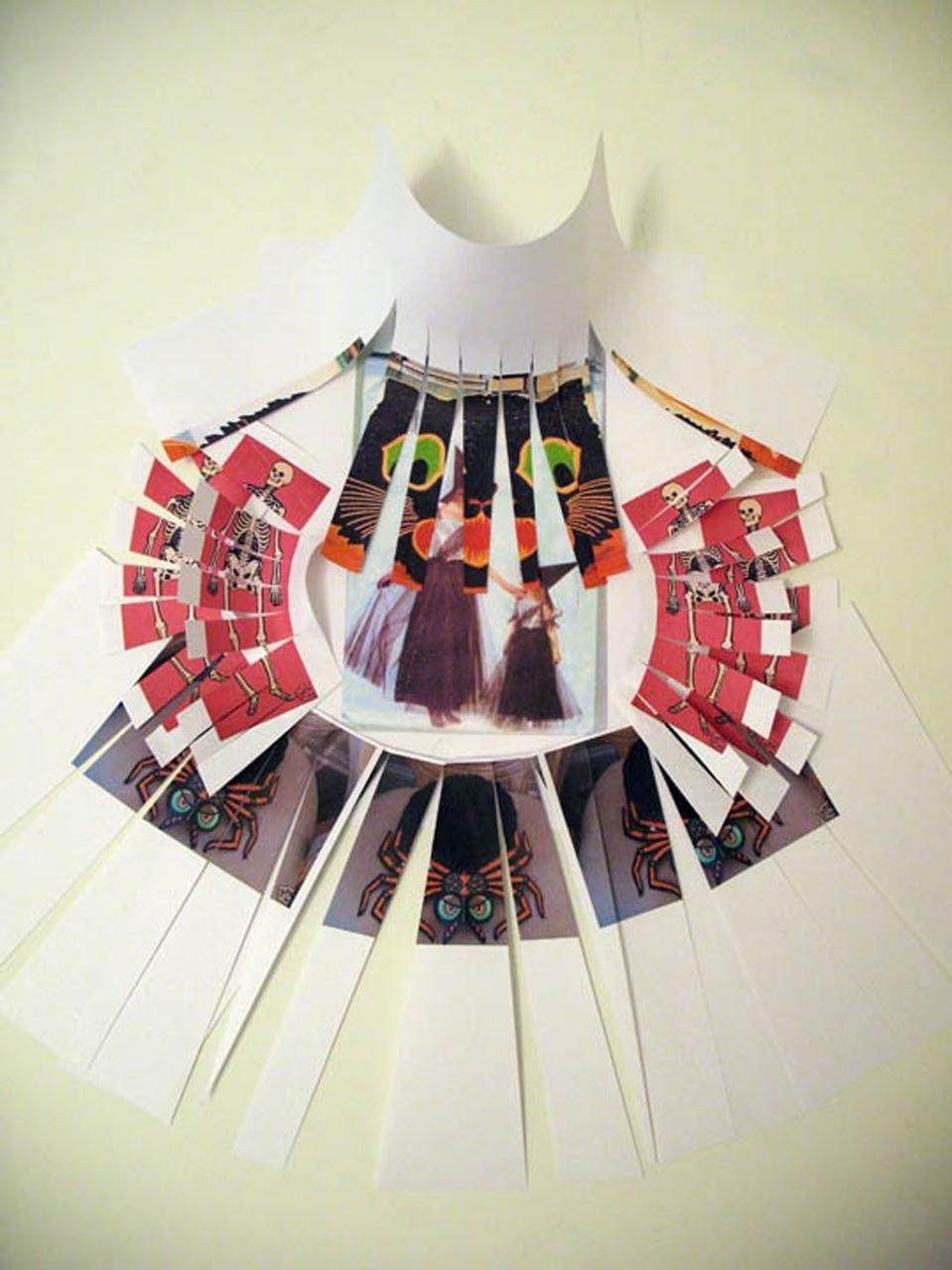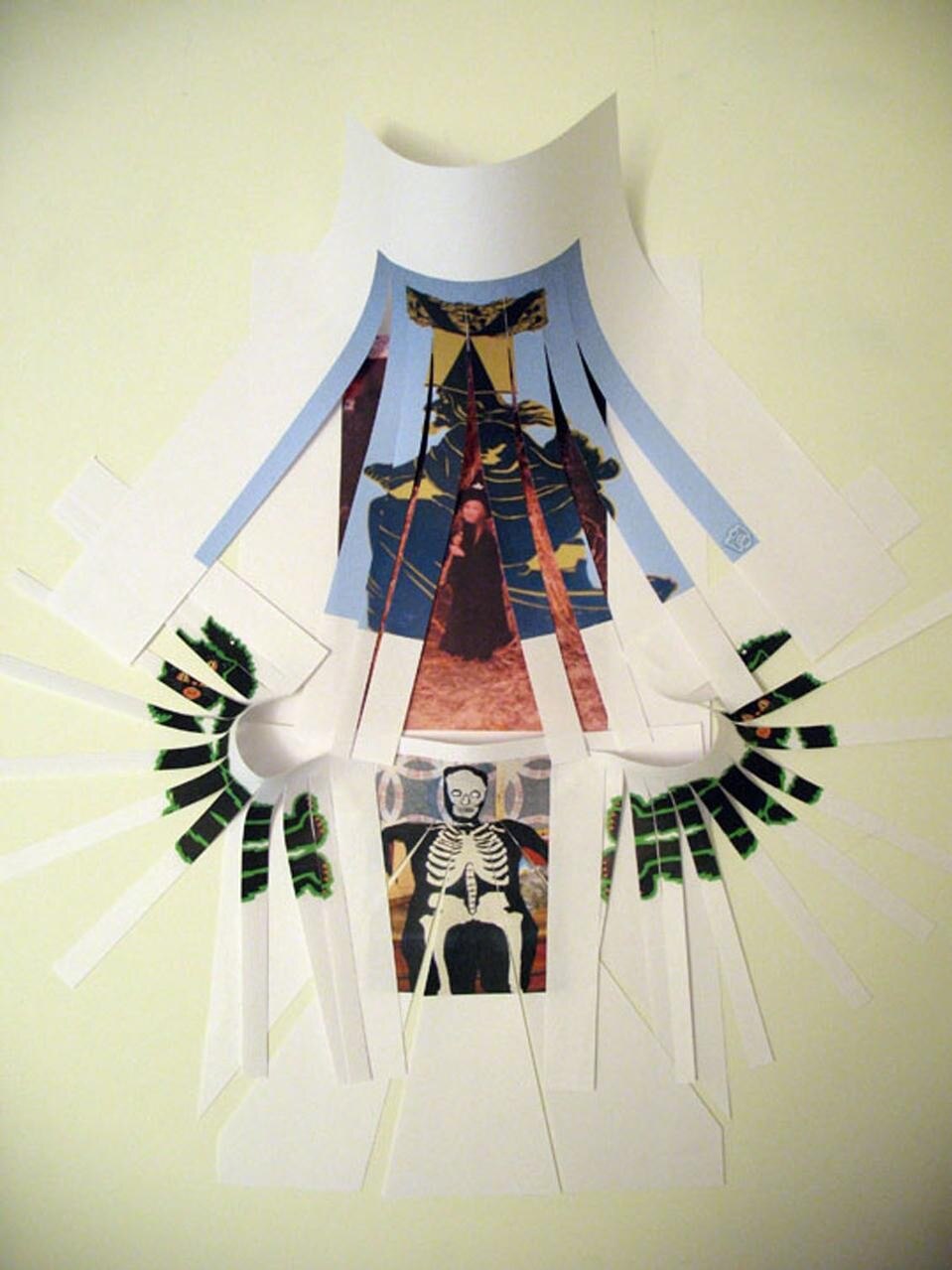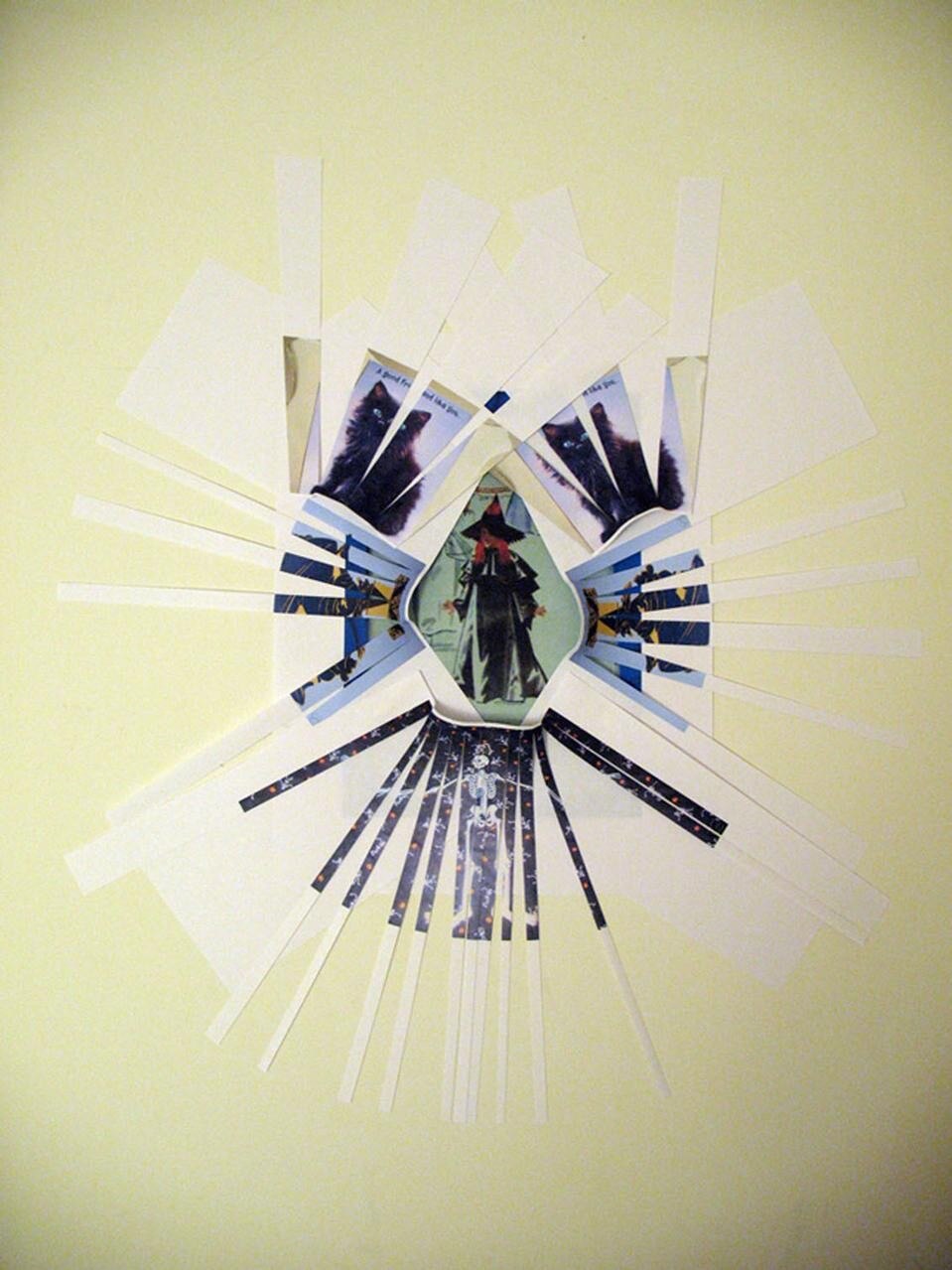Rachel_I started using collage as an alternative to drawing with pencil, so that I could represent more tangled or overlapping realities. I took images of vintage Halloween costumes and decorations and began arranging them in a way that was visually pleasurable but also disordered in its form, and spoke to human experience, where our past and present is overlapped in our minds.
What is the difference between your collage series ‘The Inadequacy of Externalizing Emotions’ where you used images of ghosts, witches, vampires and other representations of the occult, and your collage of the Domus cover?
Rachel_In my collages that use these occult images, I am looking to describe the distinction between the cultural images and motifs of basic emotions of unrest and mystery, and the true experience of these feelings, and to represent that in a visual way. There is a quote from a spiritual medium that I love that says "I asked these spirit figures if I was seeing them or if I was seeing what was in my own brain. They answered, 'both.'" I like the idea of the same thing influencing from inside and outside; however, what happens inside is much harder to visualize, and we must use symbols from physical reality to try to illustrate that.
How did you choose which images from the issue to use for the collage of the cover?
Rachel_I was looking for images that would work well once they were deconstructed, using a lot of mirroring techniques and cutting and shredding. I used a combination of architectural motifs with more human ones, creating a link between them by treating them in the same manner through the process.
Is there a figure or order behind the collage?
Rachel_I organized the images based on a system of obscuring and shaping, and deciding which images, when crossed with other images, will create a new visual space or pattern. I am interested in textile patterns, and so I also looked for designs that can emerge, almost like plaids or stripes.
The collage reminds us of a tribal mask or, even more, a mandala for its concentric geometric shapes and order. Mandalas are a schematized representation of the cosmos in Hindu and Buddhist iconography. They are used to aid meditation and induce trances. Psychoanalyst Carl Gustav Jung refers to the mandala as a representation of the unconscious self and believed that paintings of mandalas enabled him to identify emotional disorders. In particular, he found that the strict order created by a circular image is able to compensate for disorder and confusion in the psychic state by having a central point, as if the image itself had a therapeutic influence.
I have the impression that there are similarities with your work when I read that you use collage for “connecting dissimilar structures, illuminating emotional fragmentation and exploring the idea of psycho-physical disorientation or the sense of losing oneself”.
What do you think?
Rachel_I like that association with more primitive or primal works of art that also have a spiritual and magical meaning as well as an aesthetic one. I am drawn to art that attempts to work out, in a concrete form, the ephemeral functions of our interior thoughts and feelings. I think that abstracted forms can still relate to human beings... where the repetitious abstract form of the mandala may be a representation of our inner workings, but I like to connect the abstraction back to a real form in its source. Using cultural images adds another connection for us to relate to, and more associations for our minds to make.
